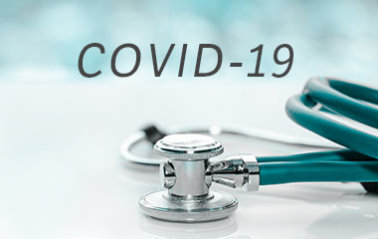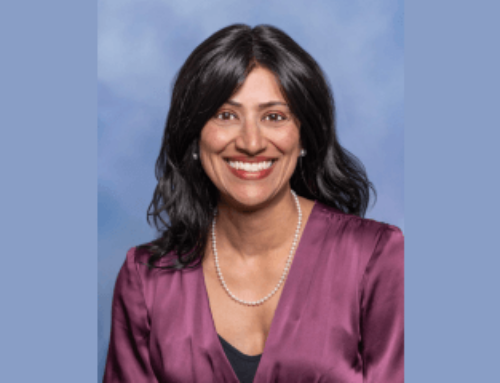The AASM COVID-19 Task Force is providing this update to help sleep medicine clinicians understand current issues and considerations related to the COVID-19 pandemic. This information supplements the guidance already available in the AASM summary of CDC recommendations and the considerations for the practice of sleep medicine.
Situation Summary
We are unaware of any known COVID-19 outbreaks associated with care provided by sleep centers. Therefore, the mitigation strategies that sleep labs and practices have been implementing appear to be promoting patient and staff safety. Some of the evidence-based strategies recommended by the CDC that our members have implemented include the use of face coverings by employees and patients, physical distancing, sanitization practices, screening for symptoms before entry into clinical spaces, COVID-19 pre-testing, and widespread use of telemedicine. These strategies are most effective when used in a multi-pronged approach.
Please select the following topics for additional information. For questions or to provide feedback, please contact the AASM at covid@aasm.org. View more COVID-19 resources from the AASM.
Sleep facility leaders should encourage staff and patients to be vaccinated in accordance with CDC guidance. Hospitals and health systems that are prioritizing clinical staff for vaccination should include sleep technologists (both part-time and full-time) among those who are prioritized to receive the vaccine. Sleep clinicians should address vaccine status at appointments, be prepared to answer questions and offer education to patients, and encourage healthy sleep habits before and after vaccination, which may help optimize the immune response.
While COVID-19 vaccine approval by the FDA is an important development, you should anticipate that vaccine distribution will take time. Variations in states and localities may exist in distribution protocols and schedules. Even after vaccination, we encourage continuation of mitigation strategies. The CDC emphasizes that it is important for everyone to continue following the CDC recommendations for how to protect yourself and others. Vaccine resources available from the CDC include clinical resources, recipient education, and a communication toolkit for medical centers and clinicians.
Many patients are delaying or avoiding medical care due to COVID-19 concerns. This may include delaying care for common, treatable sleep disorders. Consider communicating with patients to indicate that 1) delaying needed care can increase medical risks; 2) COVID-19 transmission to patients in health care settings has been low; 3) CDC safety recommendations are being followed; 4) convenient options such as telemedicine and home sleep apnea tests are available, 5) getting sufficient sleep before and after vaccination may help to optimize the immune response, and 6) healthy sleep is essential for health, well-being and safety. (The AASM public relations team is developing patient communication resources that will be available soon.) Always remind patients to stay home if sick and notify them that COVID-19 prescreening and/or testing may be required. Offer education regarding mitigation strategies for using PAP at home, which may include use of a PAP mask filter as an option.
Similarly, we encourage sleep medicine practices to communicate with referring providers, emphasizing that sleep medicine services are essential and encouraging patients to access available services.
Regarding the duration of isolation and precautions for adults with COVID-19, the CDC recommends a symptom-based strategy, rather than a test-based strategy, for ending isolation of these patients. The CDC reports that people with mild to moderate COVID-19 remain infectious no longer than 10 days after symptom onset. People with more severe to critical illness or severe immunocompromise likely remain infectious no longer than 20 days after symptom onset. Although rare, CDC cautions that some people who have COVID-19 may become susceptible to reinfection, beginning around 90 days after symptom onset. Therefore, when scheduling care (e.g., sleep study) for a COVID-positive patient, consider scheduling the patient:
- at least 10 days after symptom onset (or after a positive test if the patient never developed symptoms); OR
- at least 20 days after symptom onset if the illness was severe; OR
- if at least 90 days have elapsed since symptom onset, consider pre-appointment COVID-19 screening.
One general concern is that health care workers appear to be more likely to contract the virus in the community when away from the workplace. In November, Mayo Clinic reported that more than 900 clinical staff had contracted COVID-19 in the previous two weeks. Of these infections, 93% occurred in the community away from the job. Among the Mayo Clinic staff who did contract the virus at work, most did so while eating in a break room with a mask off.
These findings are consistent with another report in JAMA, which concluded that hospital transmission of the virus “in the setting of universal masking is likely rare, even during periods of high community prevalence.” It also concluded that hospital-based outbreaks are more likely to occur in small workrooms and during mealtime when staff are less adherent to masking and physical distancing. These data suggest that the predominant risk for health care professionals arises from spread from other colleagues rather than from patient to health care worker. Therefore, it is important to emphasize to sleep center staff that they need to adhere to safe practices (e.g., wearing a mask, physical distancing) outside of the work environment and in common areas at work (e.g., break room, eating area, cafeteria).
The following practices should be considered to reduce transmission in workplaces, notably in common areas such as break rooms, meeting rooms, and cafeterias or other eating areas:
- Allow telework when possible; use virtual platforms for meetings when possible.
- Continue core safety practices including masking, physical distancing, hand hygiene, and limiting group sizes while at work; limit access to health care facilities to essential personnel, patients, and caregivers.
- Re-evaluate staff roles to support gaps in care.
- Optimize staff scheduling (e.g., team rotations) to minimize interactions between different personnel.
- In the event of COVID-positive results, consider contact tracing to identify exposure to patients or staff, which is more effective in communities with low transmission rates.
- Encourage adherence to safe practices outside of work environments, including in homes and in personal gatherings; encourage vaccination; limit out-of-state travel; if travel occurs, follow CDC travel guidance.
- Follow CDC recommendations for health care settings. Consider using outdoor spaces, distance markers, and well-ventilated areas; and removing extra tables and chairs to reduce maximum room occupancy, and/or adding plexiglass dividers when appropriate and feasible.
- Consider ventilation needs in common spaces; be aware that shorter exposure durations and distances greater than 6 feet still can confer risk, especially indoors.
- Consider scaling back clinical services if necessary:
- Monitor manpower and potential need for re-deployment to cover COVID-19 related medical services.
- Monitor and optimize personal protective equipment (PPE) supplies, especially N95 respirators.
- If PAP therapy is administered, consider using a PAP mask filter to mitigate potential virus transmission.
- Continue to monitor community prevalence rates and local, regional, health system, state, and federal recommendations and mandates.
The CDC notes that targeted testing of patients without signs or symptoms of COVID-19 might be used to identify those with asymptomatic or pre-symptomatic infection and further reduce risk for exposures in some health care settings. However, many regions are experiencing a lack of testing availability and long turnaround times for results. When staffing shortages are extreme, however, consider offering expanded testing if feasible. Newer options for testing include an all-in-one test kit for home use, as well as saliva tests and pooled testing. Be aware that tests can be falsely negative. Considerations include:
- Consider testing individuals who may be in contact with workers assigned to high-risk environments (e.g., household or family members, caregivers, tutors, carpools).
- Be aware that during a surge, standard contact tracing will not reliably identify exposures.
- Consider random testing of workers.
Many of the outbreaks associated with health care institutions have been in skilled nursing facilities. Considerations for patients who reside in long-term care facilities include:
- Regularly screen patients who use PAP for symptoms and signs of COVID-19.
- Consider COVID-19 pre-testing when sleep laboratory services are required. Availability of testing continues to be an issue in some regions, with up to one week required before the reporting of results; in these situations, there is opportunity for re-exposure during the wait period.
- Be aware that PAP mask filters have received emergency use authorization by the FDA. Data regarding the efficacy of these filters is unavailable at this time.





